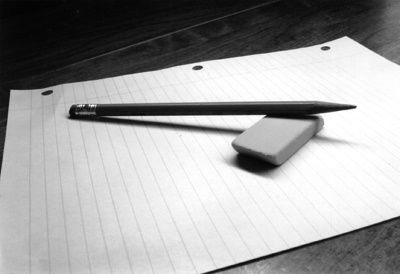All Nonfiction
- Bullying
- Books
- Academic
- Author Interviews
- Celebrity interviews
- College Articles
- College Essays
- Educator of the Year
- Heroes
- Interviews
- Memoir
- Personal Experience
- Sports
- Travel & Culture
All Opinions
- Bullying
- Current Events / Politics
- Discrimination
- Drugs / Alcohol / Smoking
- Entertainment / Celebrities
- Environment
- Love / Relationships
- Movies / Music / TV
- Pop Culture / Trends
- School / College
- Social Issues / Civics
- Spirituality / Religion
- Sports / Hobbies
All Hot Topics
- Bullying
- Community Service
- Environment
- Health
- Letters to the Editor
- Pride & Prejudice
- What Matters
- Back
Summer Guide
- Program Links
- Program Reviews
- Back
College Guide
- College Links
- College Reviews
- College Essays
- College Articles
- Back
The Lost Art of Handwriting
Everyday we use computers. They have our music and movies, as well as the internet, which has magazines, news articles, and even text books. Most classes require papers to be typed. But is living digital really better for us? In the loss of physical media, we’re also losing the art of handwriting, even though writing by hand is more beneficial for us than typing is. When a person writes by hand, they use more of their brain, and they're forced to think their words through more than they normally would, whereas computers in general have their disadvantages.
According to the AOL Healthy Living article “Why Does Handwriting Make Us Smarter?”, manual writing stimulates three parts of your brain: the visual part, the part that controls your motor skills, and the cognitive part. The first part, the visual part, is what processes the paper, the pencil, the words that may be being copied, and what is being written, as it’s happening. When a person writes, his eyes follow the tip of the pencil, processing not only every letter, but each stroke the hand makes. After the writing is finished, the eyes scan the page to see if everything looks correct. Typing something, requires the writer to only watch the screen, and to not think about each individual letter, but rather where on the keyboard the next letter is. People don’t have to think about individual letters anymore because we only take a tiny moment of our time hitting the key.
In addition to exercising the visual part of the brain, writing by hand also uses motor skills more than typing. Writing requires someone to place the paper on the desk, pick up the pencil, put it on the paper, press down enough to make a mark, and draw the symbols that are letters. The entire hand, and sometimes even arm, is used in the process. Hitting a letter on a keyboard is a process that takes hardly any time at all, which makes errors more frequent because the writer can get easily distracted.
The cognitive part of the brain works closely with the part that controls motor skills, and is one that is hardly used at all when typing. This is the part that remembers shapes of letter, numbers, and other symbols. It tells the hand where to go and how to move. When the brain says a word doesn’t look right, this part makes the decision of whether it's spelled wrong or if it's just a funny looking letter. With computers, every spelling error, incorrect use of punctuation and bit of improper grammar is underlined by whatever typing program is being used. This somewhat eliminates the need to proofread, which is extremely beneficial to things other than grammar.
The parts of the brain all work together with the reticular activating system (RAS). Melanie Pinola’s article “Why You Learn More Effectively by Writing Than Typing” explains the brain’s RAS. This is the system that makes the brain focus on the task at hand. Because writing by hand uses more of your brain than typing, the RAS is more active, allowing the writer to focus more on what they are writing and block out other distractions. Another thing scientists have discovered in handwriting research is children aren’t developing the cognitive skills that previous generations have had because kids are being taught that typing is better than writing by hand at a younger and younger age.
Computers in general have their disadvantages. The screen itself can be hazardous to one’s health. Just like TV screen, computer screens can dull your brain. In my personal experience, too much time in front of the computer is a trigger for my chronic migraines. Since I’ve cut back on my screen time and started doing more of my school papers by hand, my number of migraines has decreased greatly and my writing skills in general have improved.
All the benefits of writing by hand paired with the disadvantages of computers point to one thing; writing by hand is better for your brain than typing is. In a world where everything is becoming digital, we must draw the line between what is more convenient for us, and what is better for us. If this trend of disappearing physical media continues, normal handwriting will soon go the way of things like calligraphy, where it's practiced by few and used only on special occasions. When was the last time you handed in an essay written by hand? When was the last time the teacher allowed you to? Next time you have a paper due, try writing it out a few times before you type it.

Similar Articles
JOIN THE DISCUSSION
This article has 0 comments.
